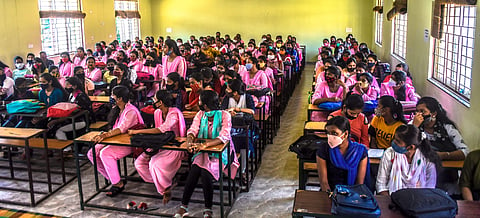

As news goes around about crowded schools in Northeast Delhi, it is time to look at the same phenomena that envelop schools across the country.
India has one of the largest education systems in the world, with over 260 million students enrolled in schools. However, the system is also plagued by overcrowded classrooms. According to a 2020 report by the National Council of Educational Research and Training (NCERT), the average teacher-student ratio in India is 1.30, which is well above the recommended ratio of 1.20.
Overcrowded classrooms can have a number of negative consequences for students. They can make it difficult for teachers to give individual attention to each student, and they can also lead to distractions and disruptions. In addition, overcrowded classrooms can be uncomfortable and stressful for students, which can impact their learning.
There are a number of things that can be done to de-clutter Indian classrooms and improve the learning environment for students. One important step is to increase the number of teachers and classrooms. This would allow for smaller class sizes and more individualized attention for students.
Another way to de-clutter Indian classrooms is to make better use of space. For example, schools could use movable furniture and partitions to create flexible learning spaces that can be adapted to different needs. Schools could also use technology to reduce the amount of physical space needed for learning. For example, students could use tablets or laptops instead of traditional textbooks.
De-cluttering Indian classrooms is a complex challenge, but it is an important one.
